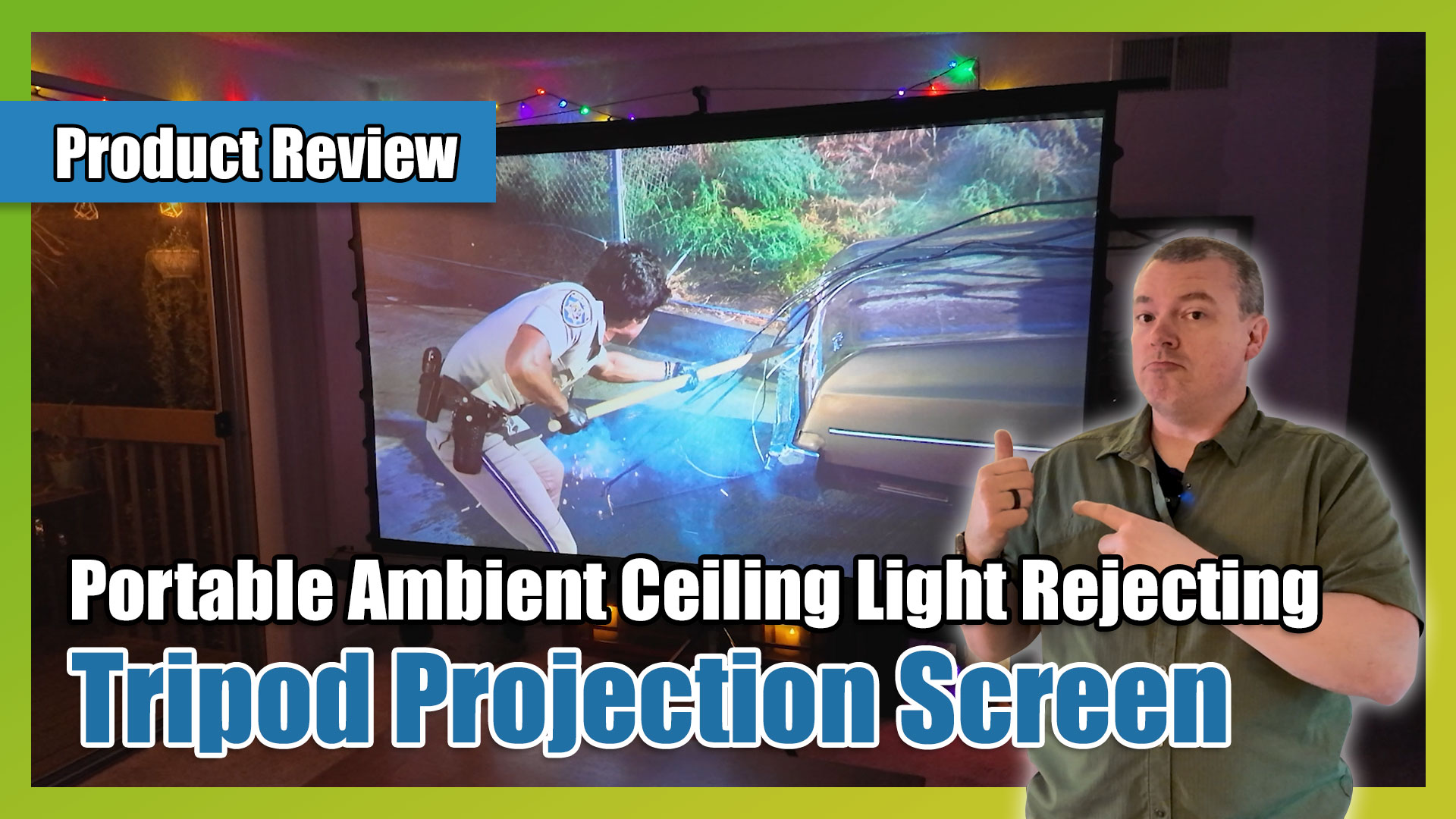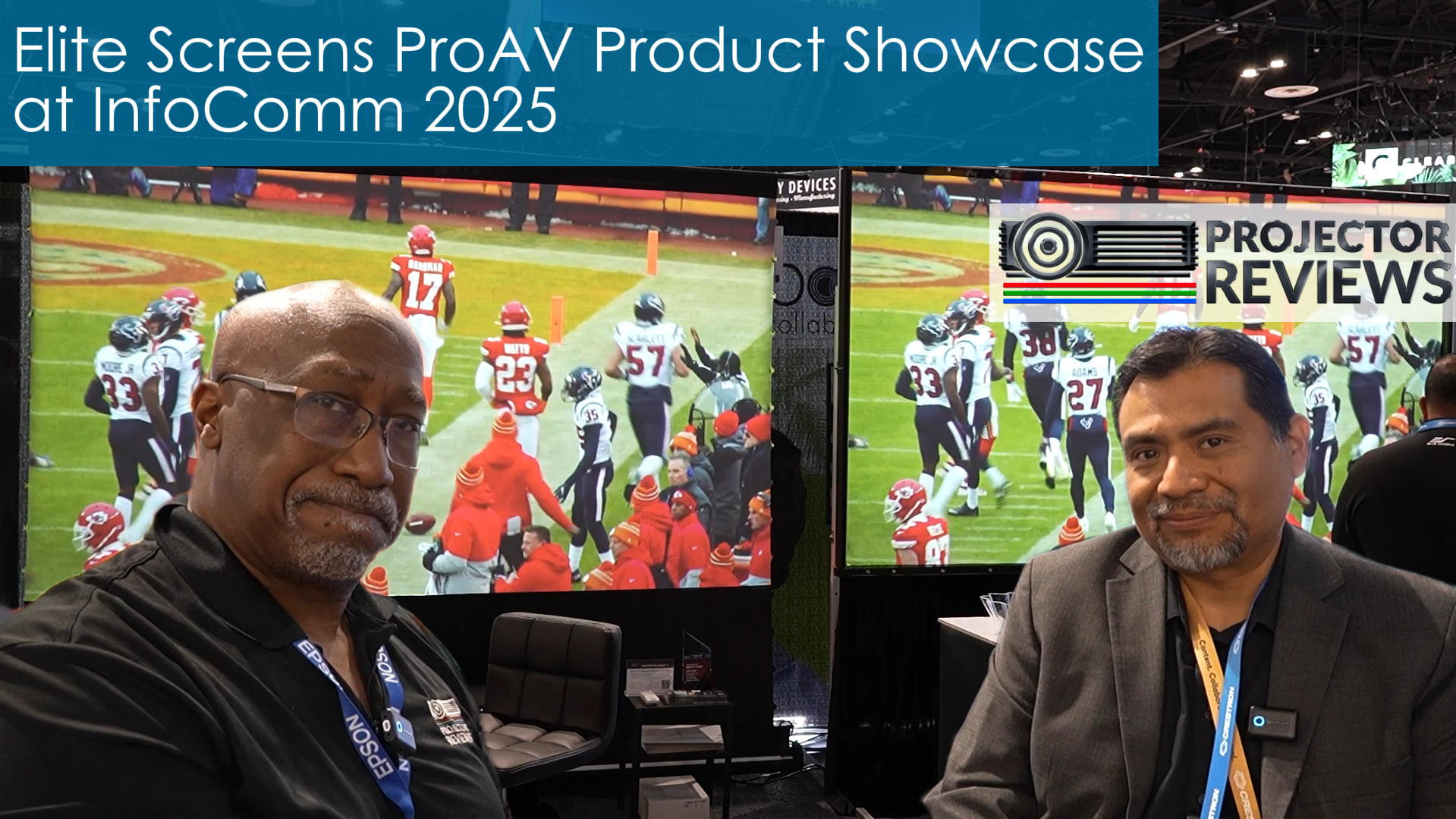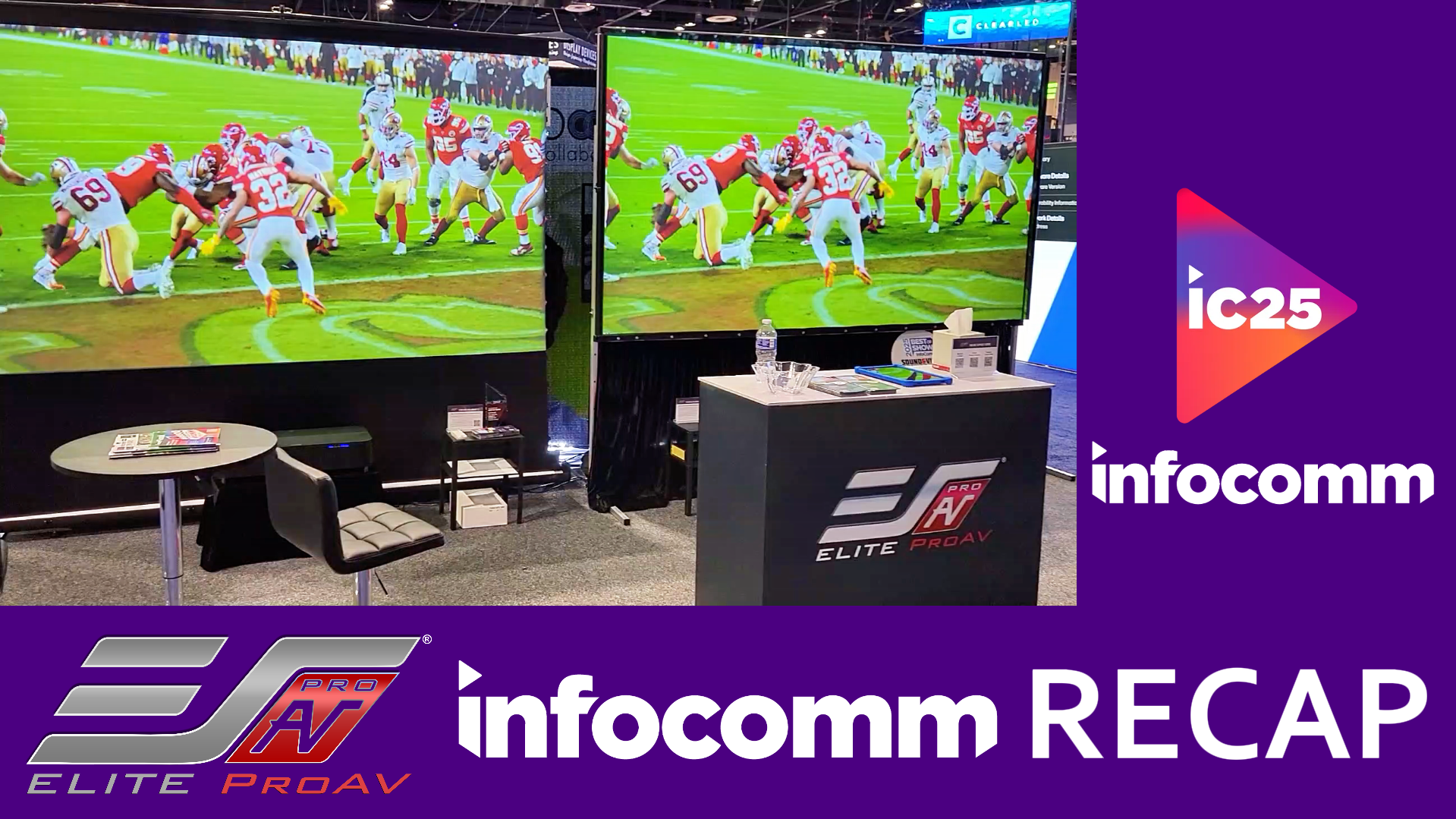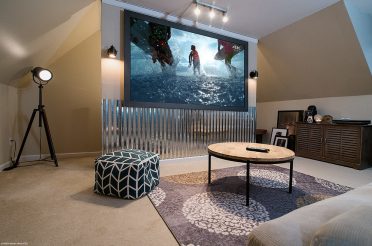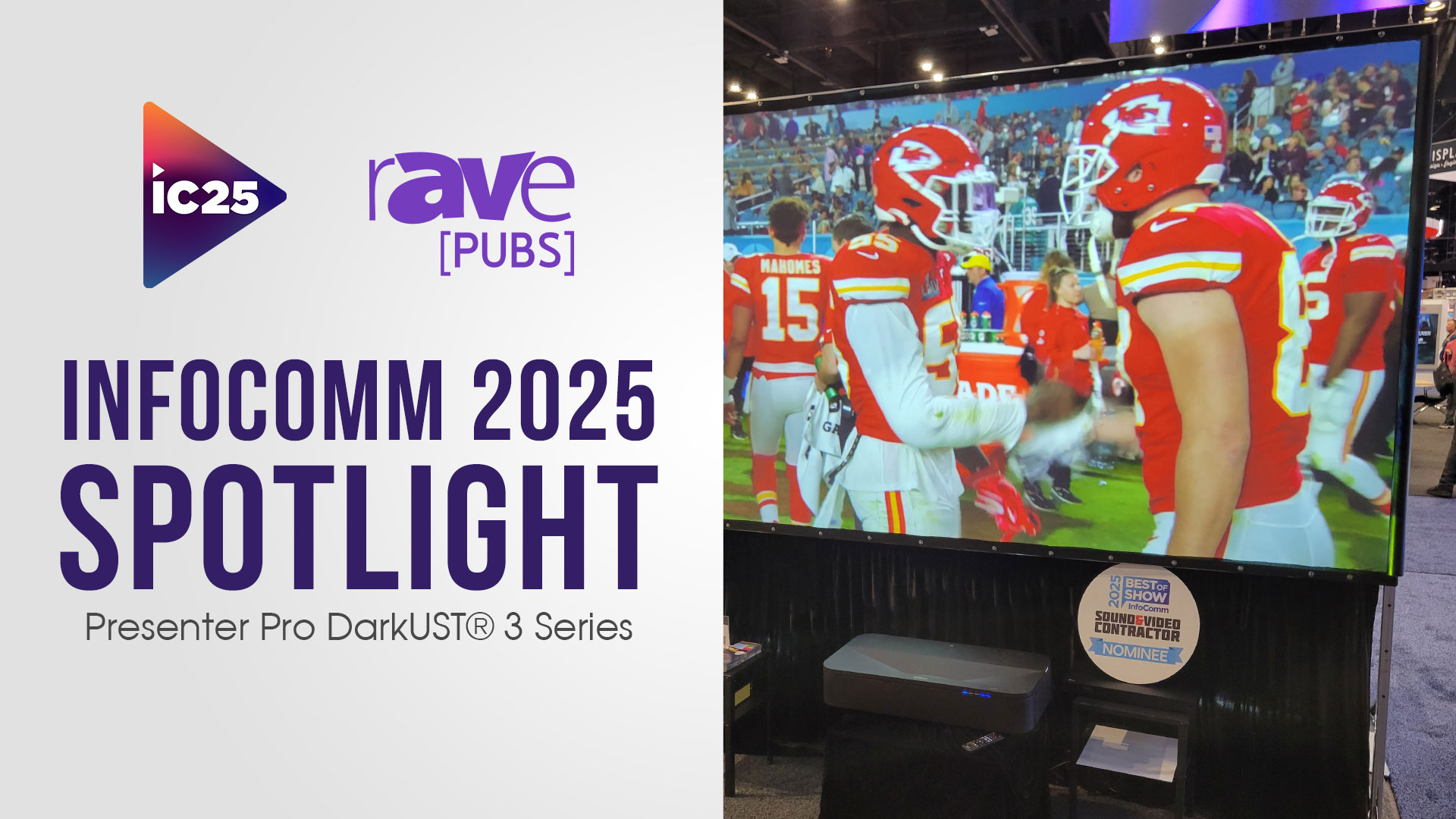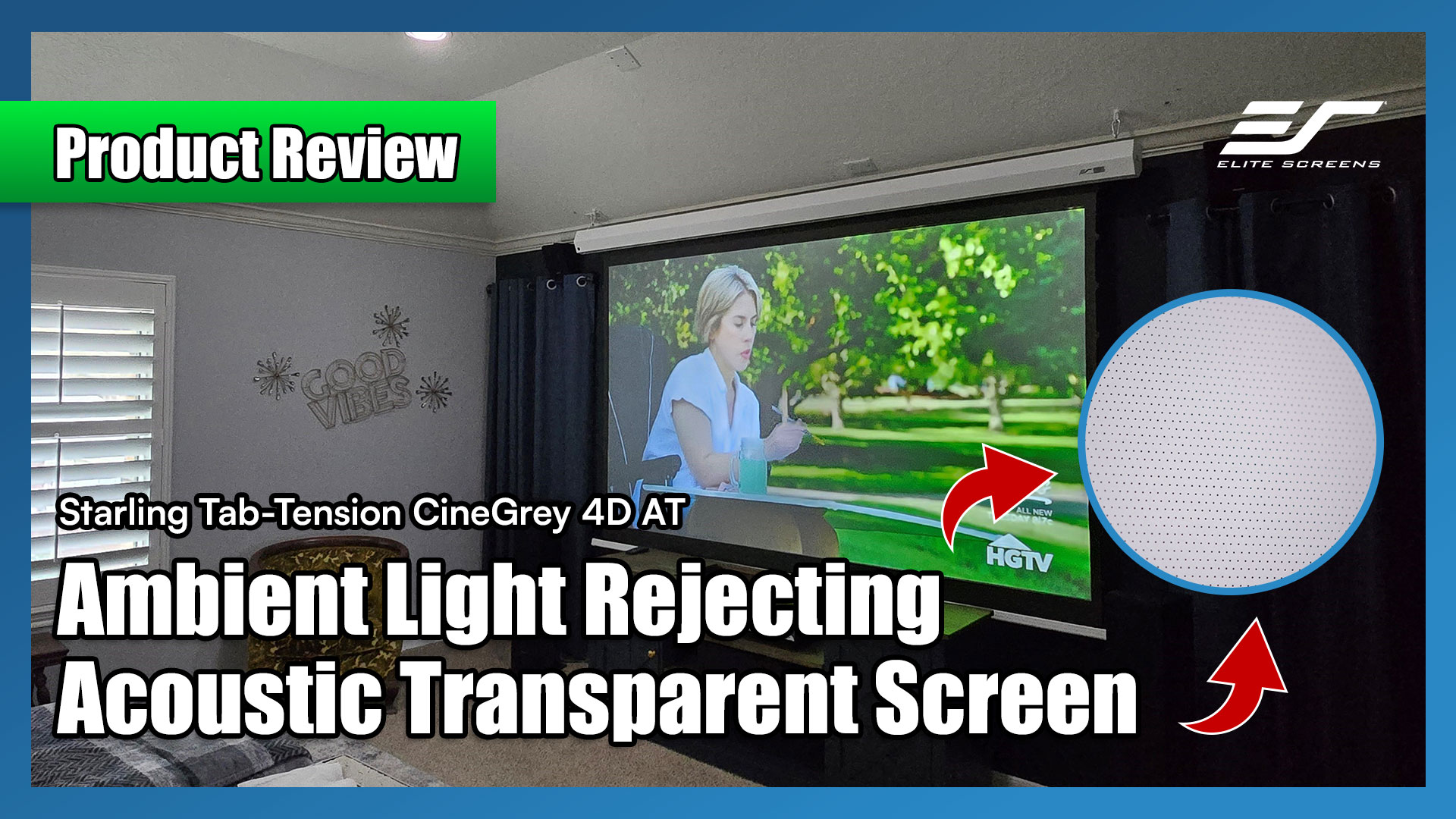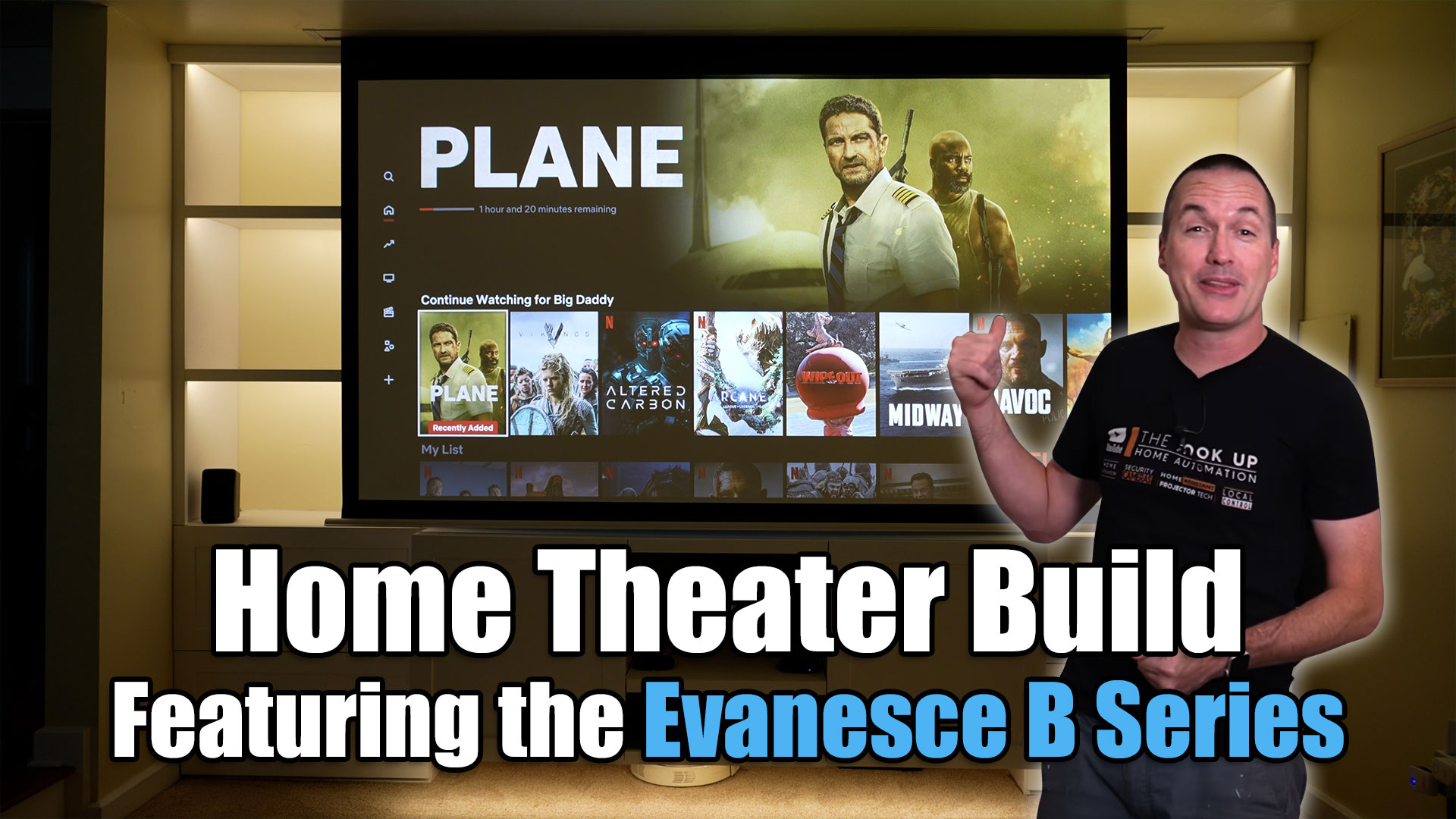A: Although matte white materials such as CineWhite® are ideal for environments where room lighting can be controlled, the image is easily washed out by ambient light. Ambient Light Rejecting (ALR) materials such as the CineGrey 5D® are suitable for environments where there are high levels of indirect (ambient) light. This material trades off on the wide diffusion uniformity of white materials in favor of a brighter (angular reflective) image. Elite’s CineGrey 5D® incorporates a diffusion layer over a highly reflective surface which scatters ambient light while improving picture performance with a brighter image. This includes color neutrality with enhanced black levels and improvement over Active 3D presentations.
A: In general, the Airbight 3D2 material is beneficial to use with Active 3D projectors to combat the following.
- Active 3D projectors lose brightness when 3D mode is activated (approximately 50% of lumens is lost)
- More is lost when the active shutter glasses are put on. The dark tint of them block the projector’s lighting. It’s like trying to watch a movie with sunglasses on.
Both high gains on the Airbright 3D2 and CineGrey 5D® materials helps regain brightness levels in 3D mode, and the high gain avaialble on the Airbright 3D2 allows for some ambient light to be on without washing out the projected image as typically experienced on matte white surfaces.
The loss of brightness impacts the true home theater experience by producing a dim and bland image. We recommend using the Airbright 3D2 for this reason.
A: For the best possible results, an anamorphic lens is recommended. However, it is possible to get a 2.35:1 screen format as long as you can live with the “black bars” created when a mismatched 16:9 native aspect ratio projecto is set up to fit a wider projection screen format. It is simply a matter of personal preference.
A: In addition to an appealing aesthetic appearance, the advantage of having a black velvet covered frame is to help absorb projector overshoot.
A: The SableFrame and ezFrame frame have different frame designs. The Sable Frame has an Astragal (half round surface flanked by 2-flat sides) profile as opposed to the ezFrame’s standard (wedge or sloped-edgethe frames are different only to suit different aesthetic needs.Please see this PDF for an illustration of the differences. Both frames come in 16:9, 16:10, and 2.35:1 aspect ratios. Both are also available in Cinegrey, Cinegrey5d, Cinewhite, Powergain, and AcousticPro1080P2. The ezFrame is different in that it is also 4:3 aspect ratio and it is available with AcousticPro1080P3 and WraithVeil(rear projection) screen material.
A: Here is a full list of the model numbers in the Sable Frame Series: ER92WH1, ER100WH1, ER106WH1, ER110WH1, ER120WH1, ER135WH1, ER150WH1, ER180WH1, ER200WH1, ER109WX1, ER114WX1, ER100WH1-A1080P2, ER120WH1-A1080P2, ER100GH1, ER120GH1, ER135GH1, ER150GH1, ER180GH1, ER200GH1, ER100DH3, ER110DH3, ER120DH3, ER135DH3, ER150DH3, ER85WH1-Wide, ER96WH1-Wide, ER103WH1-Wide, ER115WH1-Wide, ER125WH1-Wide, ER138WH1-Wide, ER158WH1-Wide, ER166WH1-Wide, ER176WH1-Wide, ER85H1-Wide, ER96H1-Wide, ER103H1-Wide, ER138H1-Wide, ER85WH1W-A1080P2, ER96WH1W-A1080P2, ER103WH1W-A1080P2, ER115WH1W-A1080P2, ER125WH1W-A1080P2, ER138WH1W-A1080P2, ER158WH1W-A1080P2, ER166WH1W-A1080P2, ER176WH1W-A1080P2
A: Each Elite Screens’ model number starts with the product series name. Follow by case color (if applicable, certain models only available in one color), screen material, screen aspect ratio and product series version. Lastly, extra black drop and its length (if applicable). Here is an example.
ER114WX1
- ER: Sable Frame
- 114: 114” Diagonal
- W: CineWhite® Material
- X: 16:10 Format (H: 16:9)
- 1: Version
A: 3D imaging occurs at a lower level of brightness than regular 2D presentations. Also, it is difficult to maintain polarization on regular projection screen materials. The benefits of Passive 3D polarized silver projection screens are that they increase the brightness of projected 3D images while allowing them to maximize retaining image polarization levels. Lastly, its diffusion layer enhances contrast. Although passive 3D imaging can arguably be performed on other projection materials, the polarized silver materials optimize overall 3D performance with the best results.
Yes, the Airbright 3D2 and CineGrey 5D projection screens are passive 3D polarized silver projection screens made for the specific reasons specified in the first part of this answer. The Airbright 3D2 is the standard retail model while the CineGrey 5D has added contrast levels for enhanced contrast and diffusion moderation.
A: Passive 3D occurs in real time with both eyes seeing an actual picture as opposed to the alternating right-Left eye flickering of active 3D technology. The advantage in this is that the image is brighter because it is simultaneously shown to both eyes. With Active 3D the glasses obstruct the vision of one eye while allowing the other to see the picture alternating at about 60 exposures per eye per second. Essentially the viewer is blindfolded half the time without really being aware of it. The “flickering” of Active 3D technology is that cross-talk and shadowing artifacts occur more easily. It also has a higher tendency to create eye-discomfort in viewers. Passive 3D allows viewers to see the image more comfortably with greater brightness and clarity. Passive 3D glasses are also inexpensive so that they may be easily obtained in quantity and do not suffer from mechanical malfunction like the electrically powered active 3D glasses.
